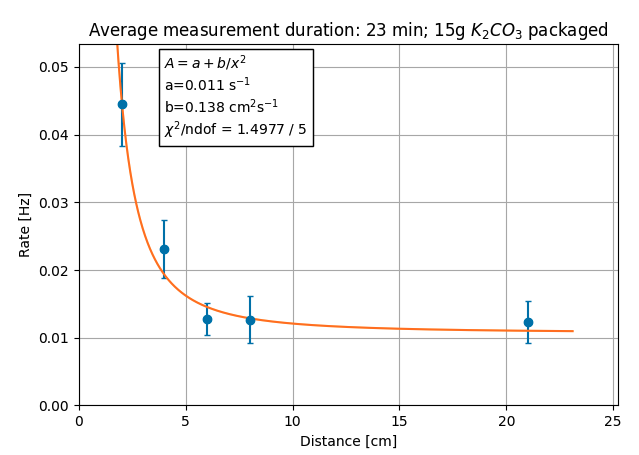To get a new detector up and running, it just needs to be assembled and programmed. The assembly includes painting the PCB edges with a black marker, tightening 6 screws and covering all openings to the analog section with thin black tape to block the light.
Programming can be as simple as dropping a .uf2 file onto the detector. As most RP2040 boards it will show up as a mass storage device, similar to a USB stick, when the boot select pin is pressed during startup. Additionally the programming headers and a UART are accessible to simplify software development.
Recording Waveforms
With a correct trigger setting, the board will record a few pulses per second. These are partially noise and partially our signal. We can measure the beta radiation as an increase in this rate. We can also look at the height (amplitude) of these pulses to learn about the energy of the particles.
Once programmed, the device shows up as a serial device. The very simple serial interface can be used by hand, but I've mainly used python scripts to record waveforms and analyse them.

Actual experiments
As an example for the experiments possible with this small detector I've measured the rate of a 15g package of potassium carbonate. Potassium carbonate is an old-school baking ingredient that I could just buy in the supermarket. Also here the Potassium-40 isotope that is contained in all natural potassium sources emits a bit of beta radiation. Due to the low activity we only get a few recorded pulses per minute. Therefore each data point in the figure below took 23 minutes.
It is clearly visible that the rate drops with increasing distance. That it does not drop to zero is because of the dark rate of our detector. Due to many different reasons like thermal excitation and background radiation it will always create some pulses.
This simple experiment already teaches a very important lesson about radioactivity: Distance helps! If you want to work safely with radioactive materials, you should try to maintain as much distance as possible.

Conclusions and Outlook
This cheap detector is easy to assemble and works quite well. I will redesign one of the structural PCBs to keep the front artwork visible, but that is a minor detail.
The next step required to make this a usable teaching tool is to add some more documentation and supporting software. I am also still waiting for a good opportunity to try this as a business-card to demonstrate my skill-set.
 Tim - DJ8TK
Tim - DJ8TK
Discussions
Become a Hackaday.io Member
Create an account to leave a comment. Already have an account? Log In.